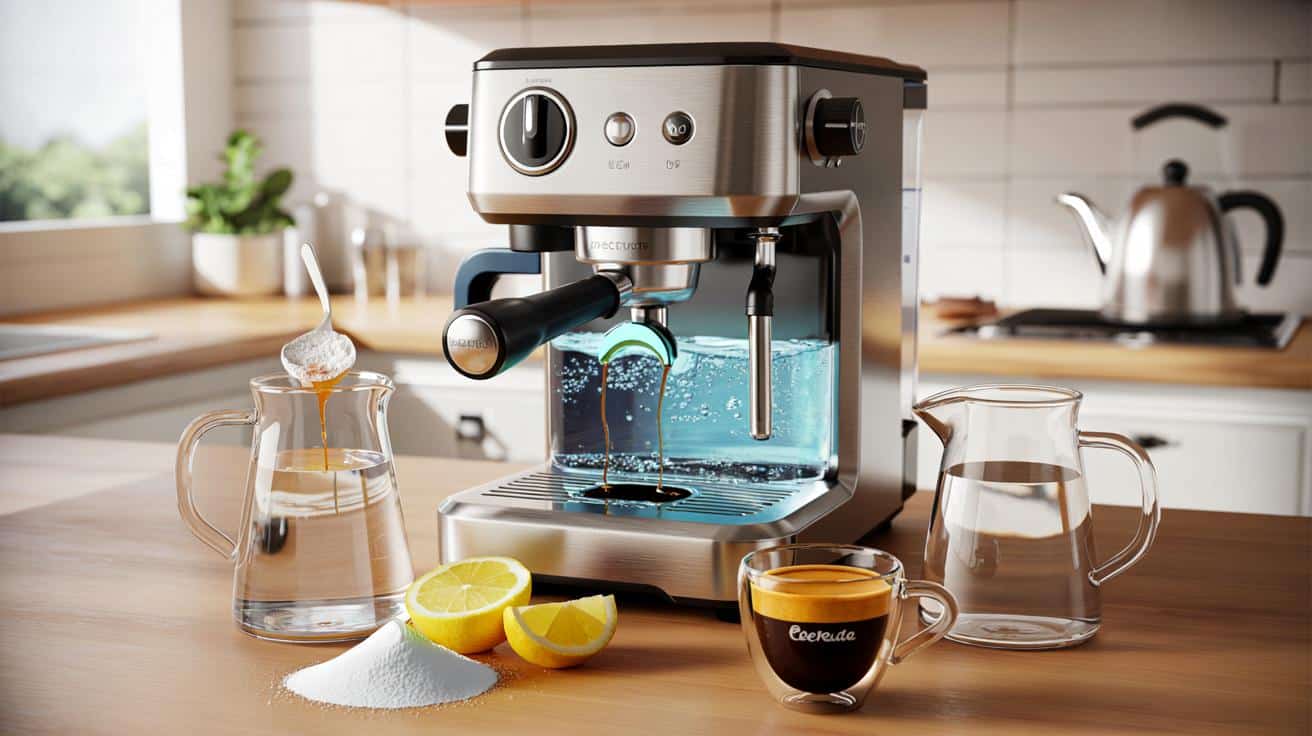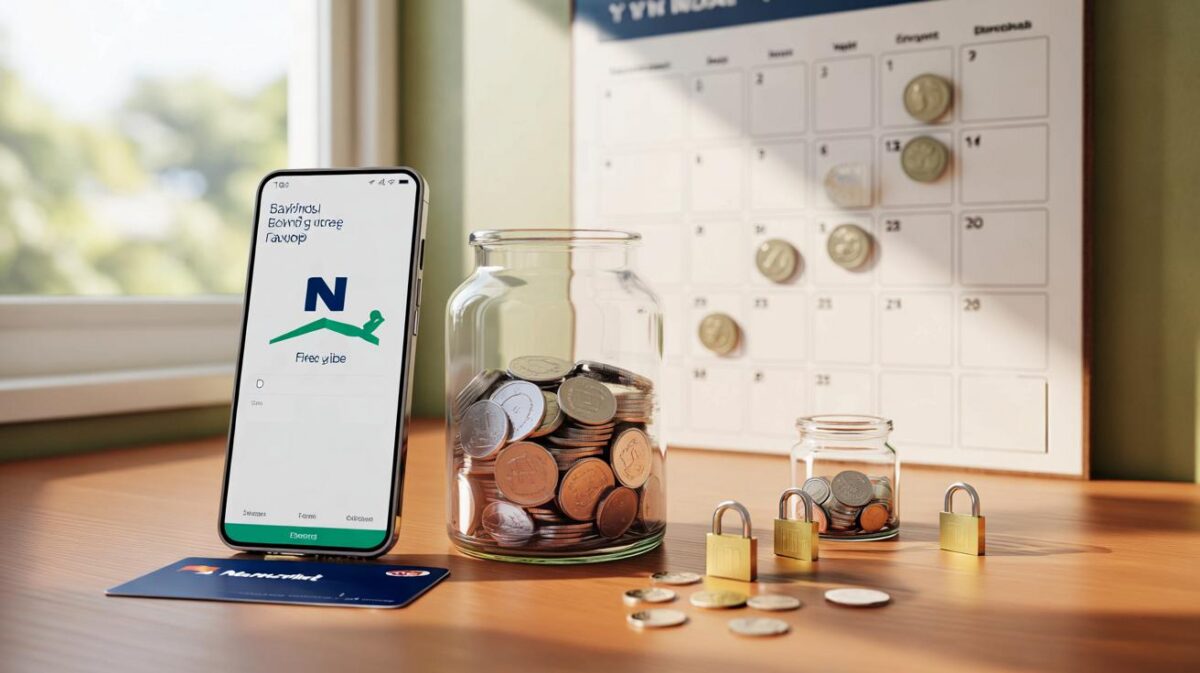When flavour flattens and bitterness creeps in, the real problem often hides inside the machine.
Across hard‑water homes, limescale builds quietly, shifting heat and choking flow. With households watching costs, more people are skipping service visits and restoring taste at home in minutes, not months.
Why your coffee tastes flat and lifeless
Limescale lays down inside the narrowest parts of a coffee maker. It coats boilers, clogs valves and traps stale oils. Heat transfer drops, so water reaches the puck cooler than the display suggests. Flow turns erratic, so extraction drifts bitter or thin. Your mouth reads it before your eyes do: dull aroma, fast‑fading crema, odd chalky finish.
Hard water accelerates everything. In many British postcodes, minerals sit high enough to scale a kettle in a week. A coffee machine is more sensitive. Tiny blockages alter the flow path through the group head. Pumps work harder. Thermostats misjudge. The engine still sounds healthy, yet the cup tells a different story.
When brightness dips, shots slow and crema collapses early, the machine is asking for a descale, not new beans.
The at‑home descale that beats a service visit
You can restore performance with items already in your cupboard. Use food‑grade citric acid or a branded descaler suitable for your model. Mix at a clear ratio: 30 g citric acid per litre of warm water. Fill the tank, then move in short bursts so the solution sits in the boiler and lines rather than racing straight to the drip tray.
- Run a 20–30 second pump cycle, stop, then wait two to five minutes.
- Repeat those pulses until the tank is half empty, then pause again.
- Finish the tank, leave it to rest for ten minutes, then rinse with two full tanks of fresh water.
Recipe that works: 30 g citric acid per litre. Pulse, rest, then rinse with two tanks of clean water.
Many households reach for white vinegar. It can work in a kettle, but some coffee machines dislike it. Undiluted vinegar can attack aluminium and rubber seals, and the smell clings. If your manual warns against vinegar, believe it. Safer options leave no aroma and protect gaskets.
Match the method to your machine
One approach does not fit every design. Adjust the routine to the hardware on your counter.
- Capsule or pod machine: remove the capsule, position a tall mug, run cycles until half the tank is gone, pause ten minutes, finish the tank, then rinse twice.
- Bean‑to‑cup: empty beans, remove and rinse the brew unit if it’s user‑serviceable, descale using the pulse‑and‑rest method, then rinse twice.
- Manual espresso: remove the portafilter, use a blind basket if backflushing is supported, pulse solution through the group in short bursts, then run two fresh tanks to clear the lines.
- Filter machine: fill with solution, run a half brew, stop for ten minutes, complete the cycle, then rinse with two full fresh water cycles.
If the first shot after a descale channels or the pump sounds sharp, don’t panic. Paths inside the machine shift when scale breaks loose. Run a few water‑only cycles, wait a minute before steaming, then brew again. Stability returns quickly.
Timing, signals and a habit you will keep
Set a schedule that matches your water. In hard‑water areas, aim for monthly. Softer water stretches to six or eight weeks. A tank filter buys time, but it does not erase the need. Your tongue gives the best signal: when sparkle fades or shots slow, that’s your cue to act.
Simple tools help. A cheap TDS meter or test strips show when a filter cartridge has done its job and needs replacing. Keep a note beside the machine: last descale date, next reminder. Small habits prevent big bills.
| Water hardness (mg/L as CaCO₃) | Suggested descale interval | Notes |
|---|---|---|
| 0–60 (soft) | Every 8–10 weeks | Use a tank filter to push towards 10 weeks |
| 60–120 (moderately hard) | Every 6–8 weeks | Watch for slower shots and fading crema |
| 120–200 (hard) | Every 4–6 weeks | Consider bottled low‑mineral water for espresso |
| 200+ (very hard) | Every 3–4 weeks | Descale monthly and replace filters on schedule |
Common blunders that wreck seals or taste
- Mixing chemicals. Never blend vinegar with other acids or detergents.
- Using neat vinegar on aluminium boilers or rubber‑heavy designs.
- Skipping the rinse. If the cup tastes tangy after cleaning, it needs another full tank of fresh water.
- Running continuous flow. Pulses work better because the solution sits where scale forms.
- Ignoring the water. Boil‑and‑cool tap water or use filtered water to slow scale between cleans.
Fast fix for busy mornings: split the job. Half a tank with descaler today, the second half tomorrow. The machine won’t mind.
Costs, taste gains and what changes in the cup
A home descale costs pennies. A 500 g bag of citric acid often sits under £5; at 30 g per litre, a full clean comes in near £0.30–£0.50. That is a fraction of a service visit and cheaper than swapping beans to chase lost flavour.
The taste lift arrives immediately. With clean metal and clear lines, water hits the puck at the right temperature and flow. Crema steadies, sweetness returns, and bitterness retreats. Milk drinks feel rounder because the coffee base stops fighting them. Many people mistake this for a new roast. It is the same beans, a freer machine.
A simple routine that sticks
Keep the pattern short and repeatable so you actually do it: fill with solution, run pulses, rest, then rinse. Ten to twenty minutes covers almost every machine. Set a calendar reminder, or tie the job to a visible moment, like replacing a fridge filter or flipping into a new month in your diary.
Make it muscle memory: fill, pulse, rest, rinse. Clear pipes, clearer flavour.
Extra tips that pay off next brew
Water choice matters. For espresso, aim for roughly 50–100 mg/L total dissolved solids with 30–50 mg/L calcium hardness and a touch of alkalinity. Bottled waters vary wildly, so check the label. Too soft and shots taste sharp; too hard and scale races back. If your tap is very hard, blend filtered water with a splash of low‑mineral bottled water to land in the sweet spot.
If you enjoy tinkering, small remineralisation recipes exist: a tiny pinch of bicarbonate of soda per litre can lift alkalinity for better balance without pushing hardness too high. Move carefully, measure, and change one thing at a time so you can taste the effect.
Look beyond the boiler. Clean the shower screen, gasket and portafilter baskets weekly. Coffee oils go rancid and mask the gains from descaling. Backflush detergent (where supported) once a fortnight. Replace group gaskets annually on many manual machines; leaks mimic bitter extraction.
If you rely on capsule or pod systems, descale on the same schedule and wipe the piercing needles. Mineral build‑up there causes weak shots and drips down the front of the machine. A cotton bud and warm water solve it in seconds.
Finally, treat steam wands with respect. After a descale, purge steam and wait a full minute before reopening the wand so the boiler refills and stabilises. That protects valves, prevents spurts and keeps microfoam predictable for latte art practice.








